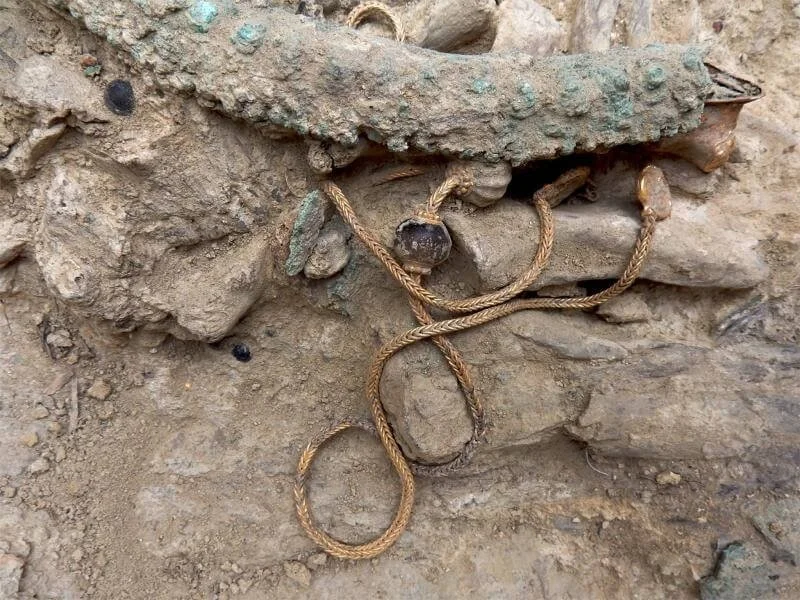Unveiling the True Story of the Black African in Japan
AI GENERATED IMAGE DEPICTING YASUKE
Yasuke, often romanticized as the "African Samurai," stands out as one of the most fascinating figures in Japanese history. While it's true that Yasuke was a Black African who wielded weapons in Japan, he was not a samurai in the traditional sense. The distinction lies in his role and status: he was permitted to bear arms, but this did not elevate him to the rank of samurai, a title laden with social and military implications.
Historical Context and Arrival in Japan
Yasuke arrived in Japan in 1579, accompanying the Italian Jesuit missionary Alessandro Valignano, who had been appointed as the Visitor of the Jesuit missions in the Indies, covering regions from East Africa to East Asia. Valignano brought Yasuke to the capital area in March 1581, where his presence caused a significant stir among the local populace, unaccustomed to seeing a Black African.
Encounter with Oda Nobunaga
Yasuke’s introduction to Oda Nobunaga, a powerful Japanese daimyō, marked a pivotal moment in his life. Nobunaga initially doubted the authenticity of Yasuke's skin color, suspecting it was ink. This led to an unusual spectacle where Yasuke was ordered to strip from the waist up and scrub his skin. The revelation that his skin was naturally black fascinated Nobunaga, who then took an interest in him.
Service Under Nobunaga
Records from Jesuit sources, including a 1581 letter from Luís Fróis and the 1582 Annual Report of the Jesuit Mission in Japan, confirm Yasuke’s unique status. Nobunaga provided Yasuke with his own house and a short sword, assigning him the role of weapon bearer. These events are documented in historical texts such as the "Cartas que os padres e irmãos da Companhia de Jesus escreverão dos reynos de Japão e China II" (1598) and the prototype of "Shinchō kōki" held by the Maeda clan archives.
The Fall of Nobunaga
In June 1582, during a pivotal moment in Japanese history, Nobunaga was betrayed by Akechi Mitsuhide and forced to commit seppuku at Honnō-ji in Kyoto. Yasuke, present during the attack, fought valiantly alongside Nobunaga’s forces. After Nobunaga’s death, Yasuke joined Nobunaga’s heir, Oda Nobutada, at Nijō Castle, where he continued to fight against Akechi’s forces until he was captured.
Yasuke's Fate
Presented to Akechi Mitsuhide, Yasuke was dismissed as an "animal" and not considered Japanese. Consequently, he was sent to the Christian church in Kyoto, the Nanbanji. What happened to Yasuke after this remains a mystery. There are no surviving records indicating whether he was killed, expelled from Japan, or met another fate.
Yasuke’s Origins
Yasuke’s origins are a subject of scholarly debate. He was likely born in Portuguese Mozambique, with some historians suggesting he was a member of the Yao people, who had recently encountered the Portuguese. This theory posits that his name could derive from the combination of "Yao" and the Japanese male name suffix "suke," forming "Yao-suke."
Another compelling theory by Thomas Lockley suggests that Yasuke was a Habshi from Ethiopia. The Habshi, known as Cafre by the Portuguese, were well-built and skilled soldiers, distinct from other East Africans who suffered from famine. This theory aligns with the idea that Yasuke’s original name might have been Ethiopian, possibly Yisake or Isaque, derived from Isaac, with Yasufe being a surname used in Ethiopia.
Conclusion
Yasuke's story is a captivating blend of historical facts and enduring mysteries. While he was not an official samurai, his role as a weapon bearer and his presence in significant historical events underscore his unique place in Japanese history. Yasuke remains a symbol of the rich and diverse interactions between cultures, illustrating how an African man could rise to prominence in a land as distant as Japan during the 16th century.
Source:
https://www.thecollector.com/yasuke-legendary-black-african-samurai/
https://en.wikipedia.org/wiki/Yasuke







